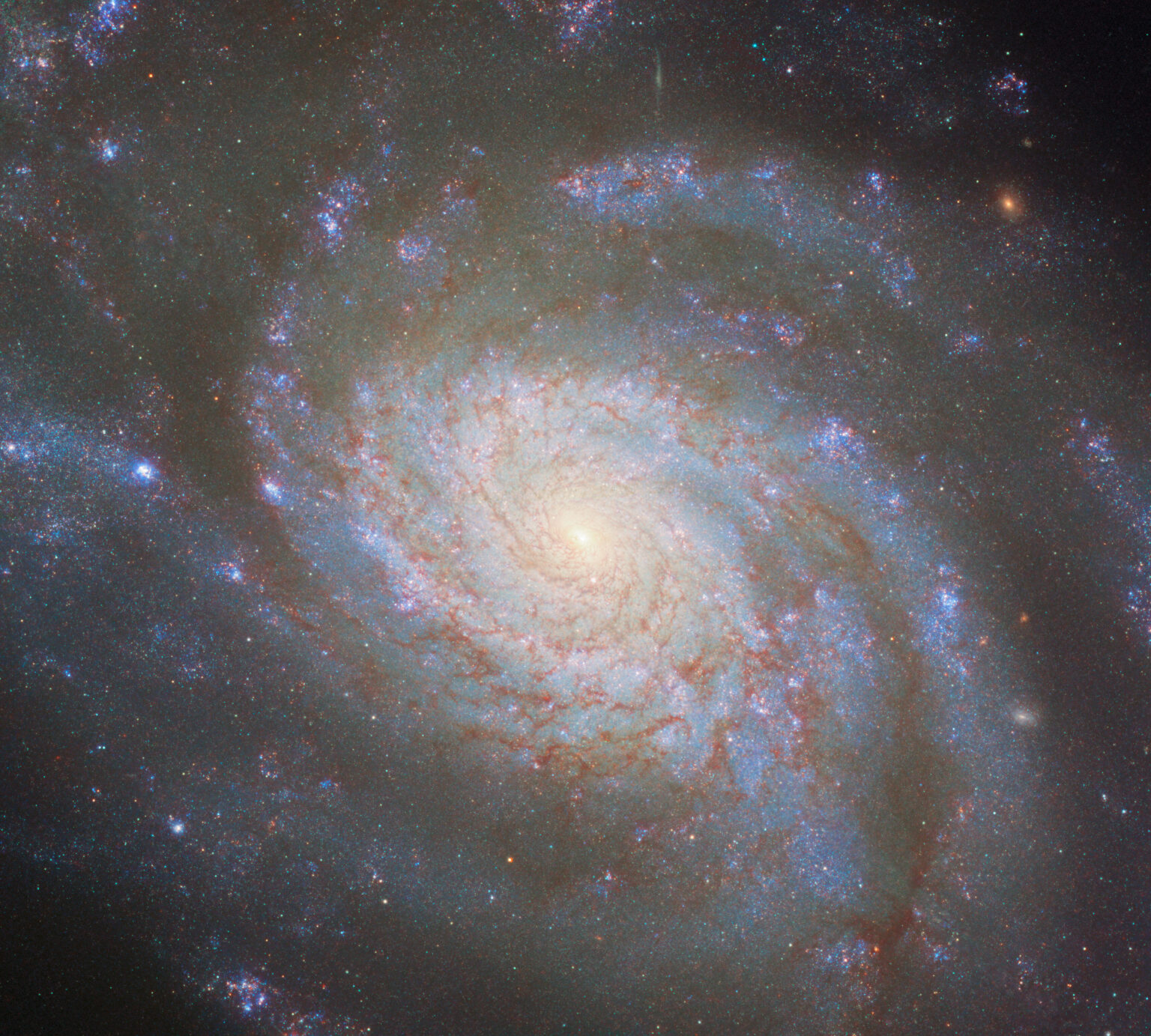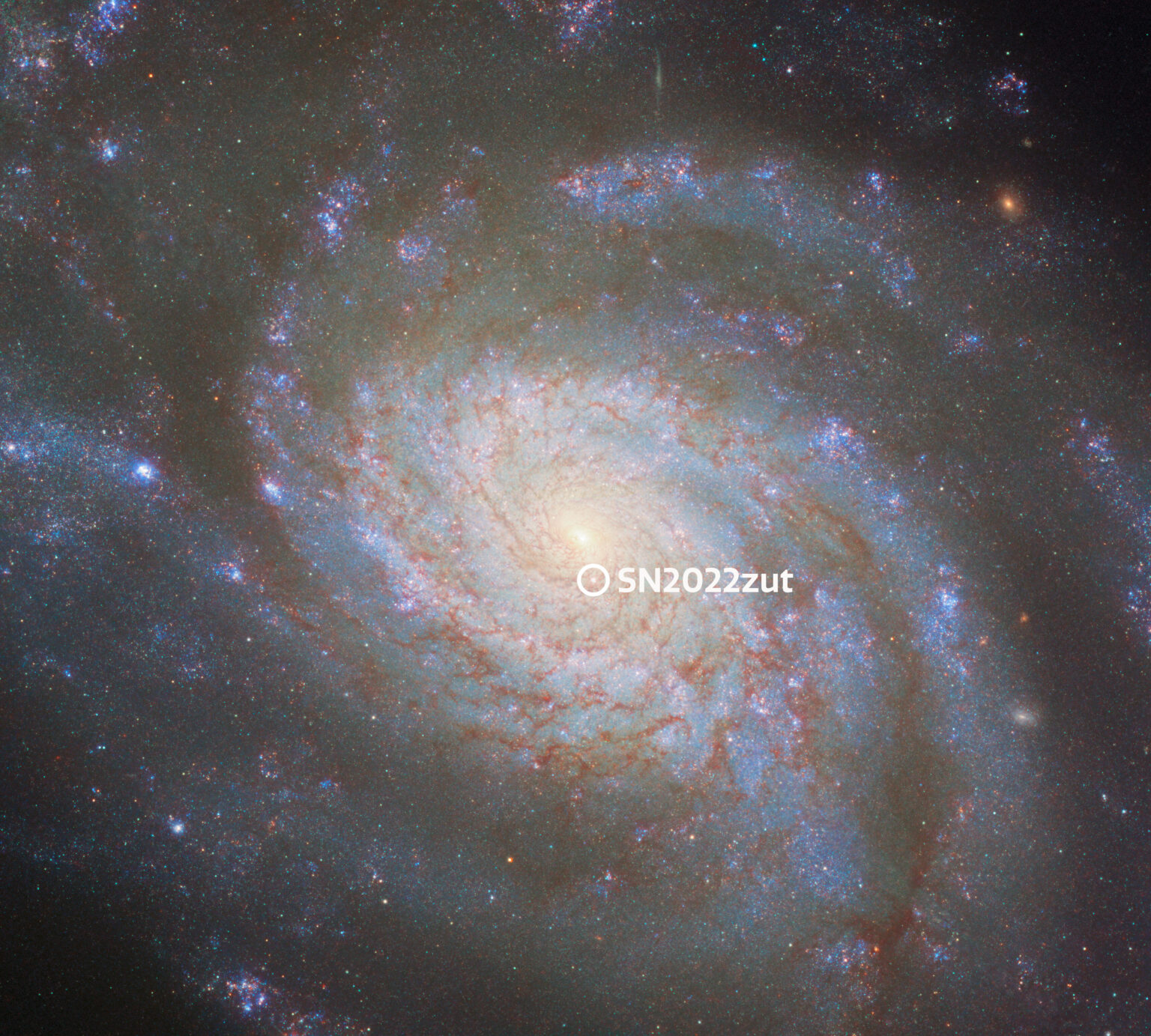Astronomers working with the Hubble telescope have published an image showing the galaxy NGC 3810. In 2022, a type Ia supernova flared up in it.

Measuring the distance to distant objects such as galaxies, quasars, and galaxy clusters is one of the most important tasks in astrophysics, especially when it comes to studying the early Universe. But it is not so easy. Astronomers have to use several indirect methods, one of which is the study of type Ia supernovae.
Type Ia supernovae erupt when a white dwarf absorbs too much matter and its mass exceeds the Chandrasekar limit. This results in a thermonuclear explosion. Since the same amount of energy is released every time during such an event, astronomers actively use Type Ia supernovae as standard candles to measure distances to other galaxies. By knowing how bright a supernova should be, they can determine how far away it should be by how dim it appears.
This is exactly the kind of supernova that flashed in the galaxy NGC 3810. It can be seen as a bright speck just below the galactic nucleus. However, it’s not enough for astronomers to just take pictures of a supernova. One of the uncertainties of this method is that the intergalactic dust between the Earth and the supernova blocks some of its light. How do we know how much of the decrease in brightness is due to distance and how much is due to dust?

Using Hubble, astronomers found a clever workaround: first, take pictures of the supernova in the ultraviolet range, which is almost completely blocked by dust. Then in infrared light, which passes through the dust almost unaffected. By carefully noting how much light passes through at each wavelength, the relationship between the supernova’s brightness and distance can be calibrated to account for dust. Since Hubble is capable of observing in both wavelengths with the same instrument, this makes it an ideal tool for this experiment.
It is worth noting that astronomers usually use several ways to measure distances to independently verify their results. One such method, which also works for galaxies, is to compare their rotation speed with their brightness. Based on this, it was determined that NGC 3810 is located 50 million light years from Earth.
Based on materials from esahubble.org

